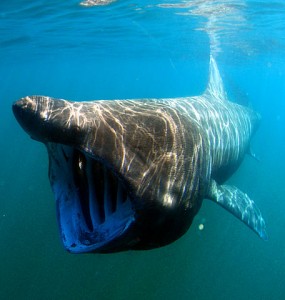Aquatic scientific names in the news …
Basking shark
The first Basking shark sighting of 2016 has been reported off Cornwall. It was photographed in Mount’s Bay on Wednesday 6th July during a wildlife cruise.
The Basking shark is the second largest shark after the Whale shark and the biggest fish found in British waters, reportedly reaching lengths of around 12 metres. A planktivorous species that feeds close to the surface, passively filtering zooplankton, small fish, and invertebrates from the water, it is a seasonal visitor to British waters, usually arriving in significant numbers between May and October each year, in search of plankton blooms.
In winter, Basking sharks leave British waters and move offshore to depths of around 900 m to feed on deep-water plankton.
Cetorhinus maximus (Gunnerus, 1765)
Etymology.
Cetorhinus – Greek, Ceto–, khtos (κητος), any sea monster, sea monster slain by Perseus (mythology), huge fish, whale; –rhinus, rinos, ris (ρις), nose, snout – likely referring to the protuberant snout
maximus – Latin, greatest, largest – likely referring to overall size.
